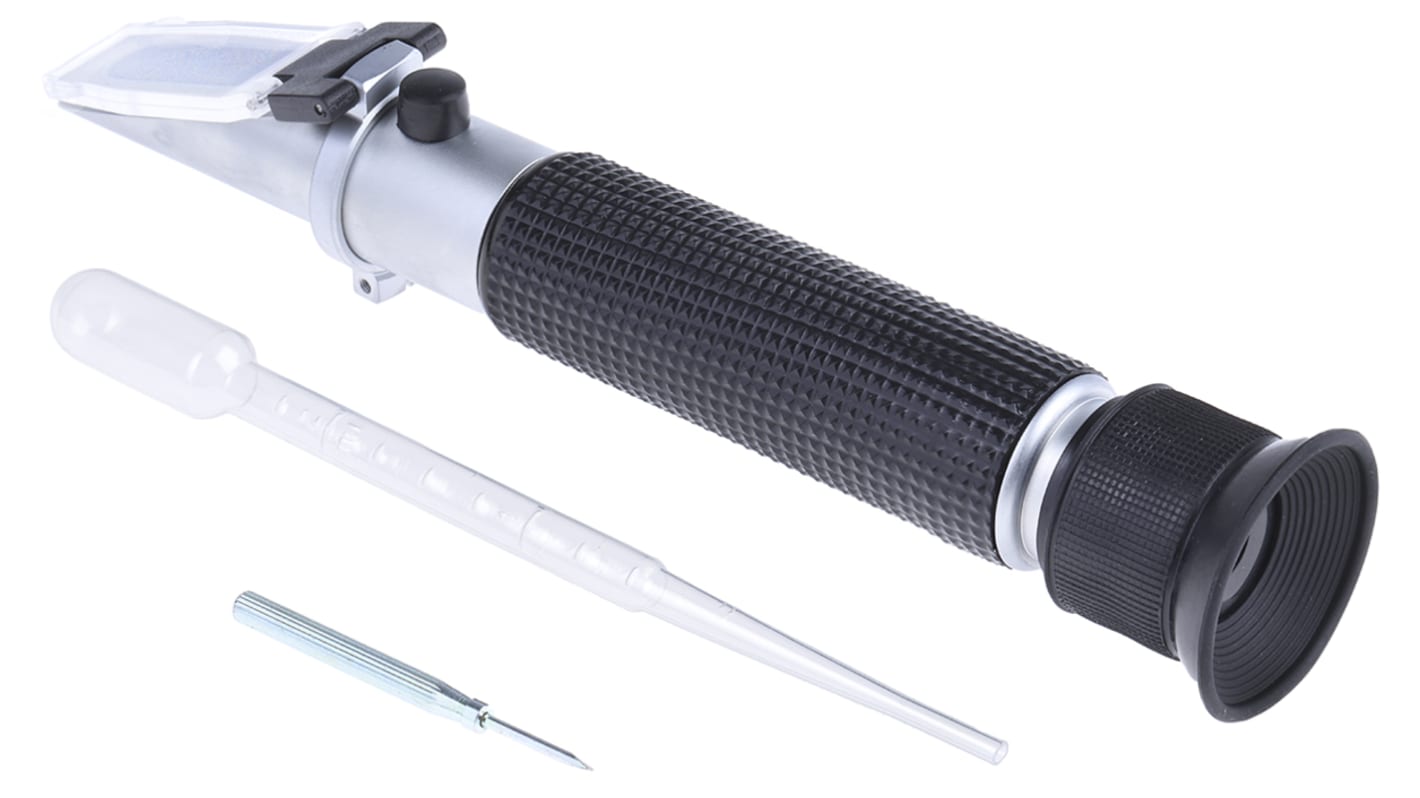RS PRO Mix Cutting Fluids Refractometer, 18% max, 0% min
- RS Stock No.:
- 877-1781
- Distrelec Article No.:
- 303-91-276
- Brand:
- RS PRO

Subtotal (1 unit)*
£152.84
(exc. VAT)
£183.41
(inc. VAT)
FREE delivery for orders over £50.00
In Stock
- Plus 48 unit(s) shipping from 17 November 2025
- Plus 12 unit(s) shipping from 17 November 2025
- Plus 30 unit(s) shipping from 24 November 2025
Need more? Click ‘Check delivery dates’ to find extra stock and lead times.
Units | Per unit |
|---|---|
| 1 + | £152.84 |
*price indicative
- RS Stock No.:
- 877-1781
- Distrelec Article No.:
- 303-91-276
- Brand:
- RS PRO
Specifications
Technical Reference
Legislation and Compliance
Product Details
Find similar products by selecting one or more attributes.
Select all | Attribute | Value |
|---|---|---|
| Brand | RS PRO | |
| Refractometer Type | Mix Cutting Fluids | |
| Maximum Measurement | 18% | |
| Minimum Measurement | 0% | |
| Best Accuracy | ±0.1 % | |
| Resolution | 0.1 %Brix | |
| Dimensions | 96 x 60 x 230mm | |
| Weight | 525g | |
| Height | 60mm | |
| Length | 230mm | |
| Width | 96mm | |
| Select all | ||
|---|---|---|
Brand RS PRO | ||
Refractometer Type Mix Cutting Fluids | ||
Maximum Measurement 18% | ||
Minimum Measurement 0% | ||
Best Accuracy ±0.1 % | ||
Resolution 0.1 %Brix | ||
Dimensions 96 x 60 x 230mm | ||
Weight 525g | ||
Height 60mm | ||
Length 230mm | ||
Width 96mm | ||
RoHS Status: Exempt
- COO (Country of Origin):
- CN
RS PRO Mix Cutting Fluids Refractometer
An ideal measurement tool which provides quick analysis of water concentration mixes. This refractometer enables easy and accurate dilution control with a prism screen which possesses a much greater refractive index than the sample solution to be measured.
Features and Benefits:
• Simple to use and re-calibrate
• Ergonomic design with rubber grip
• Calibration adjustment screw
• Quick and accurate measurement
• Easy and accurate dilution control
• 0 -18% Brix scale range
• ±0.1 % accuracy
• Ergonomic design with rubber grip
• Calibration adjustment screw
• Quick and accurate measurement
• Easy and accurate dilution control
• 0 -18% Brix scale range
• ±0.1 % accuracy
Accessories include a plastic specimen dropper, calibration adjustment tool and a fitted instrument case.
How does a refractometer work?
Refractometers are instruments used in measuring the index of refraction in liquid, gas and translucent solids. They usually have a prism screen and eye piece with a Brix scale, 2-3 drops of a solution to be measured are added to the prism, the refractometer is then pointed in the direction of a light source. The prism possesses a greater refractive index than the sample solution to be measured. In a weak sample the difference between the refractive index of the solution and the prism is great, therefore the angle of refraction is large on the scale. In a strong sample the opposite is shown, so a smaller angle of refraction on the scale. The prism and sample must both be at the same temperature to ensure accurate results.
Related links
- Extech Mix Cutting Fluids Refractometer 0%Brix min, Brix Refractometer
- Rocol Grinding Fluids, Mix Cutting Fluids Refractometer
- Kern Sugar Refractometer 0% min
- RS PRO Sugar Refractometer 0% min, Digital
- Kern Sugar Refractometer 0% min, Analogue
- Kern Sugar Refractometer 0% min, Analogue
- Kern Sugar Refractometer 0% min, Analogue
- Instruments Direct Sugar Refractometer 0% min, Optical
